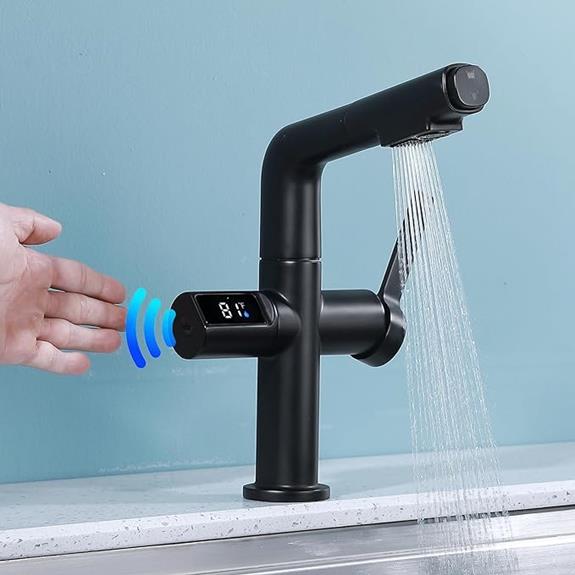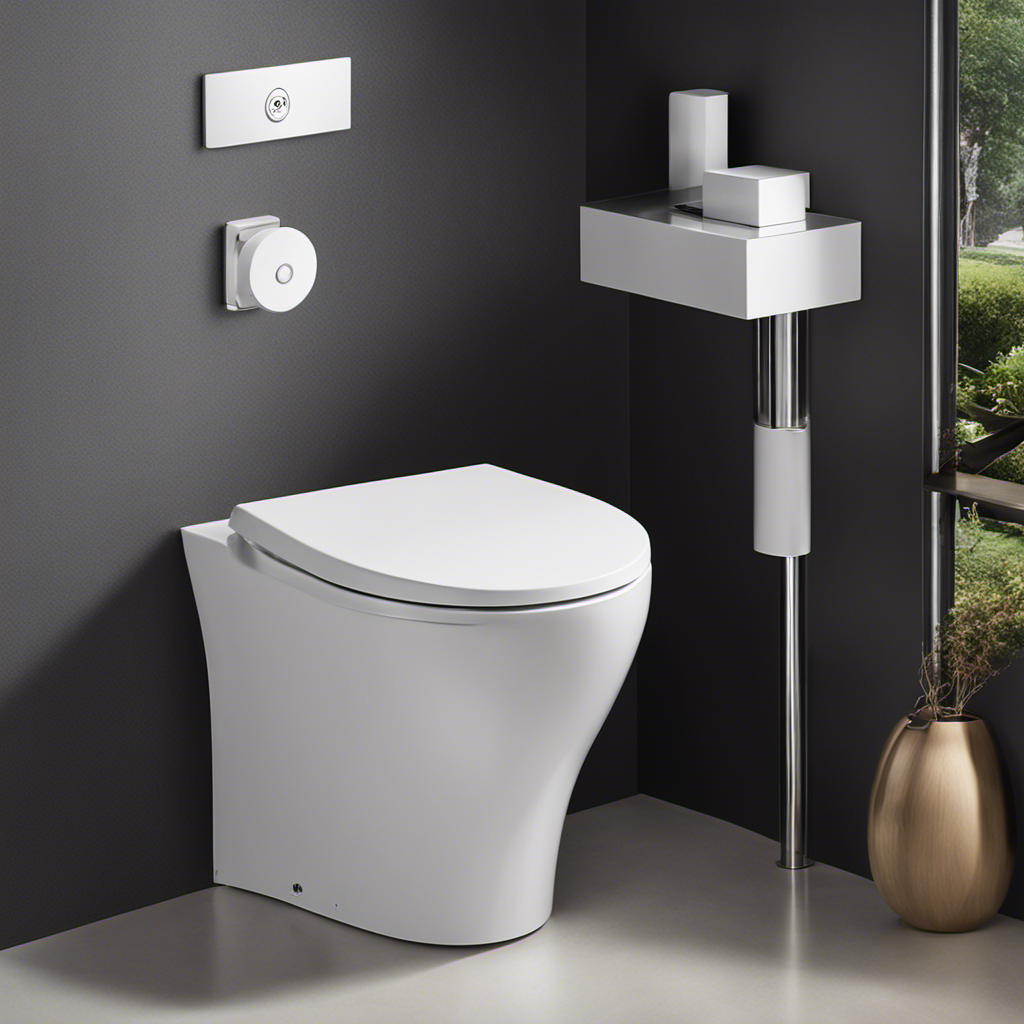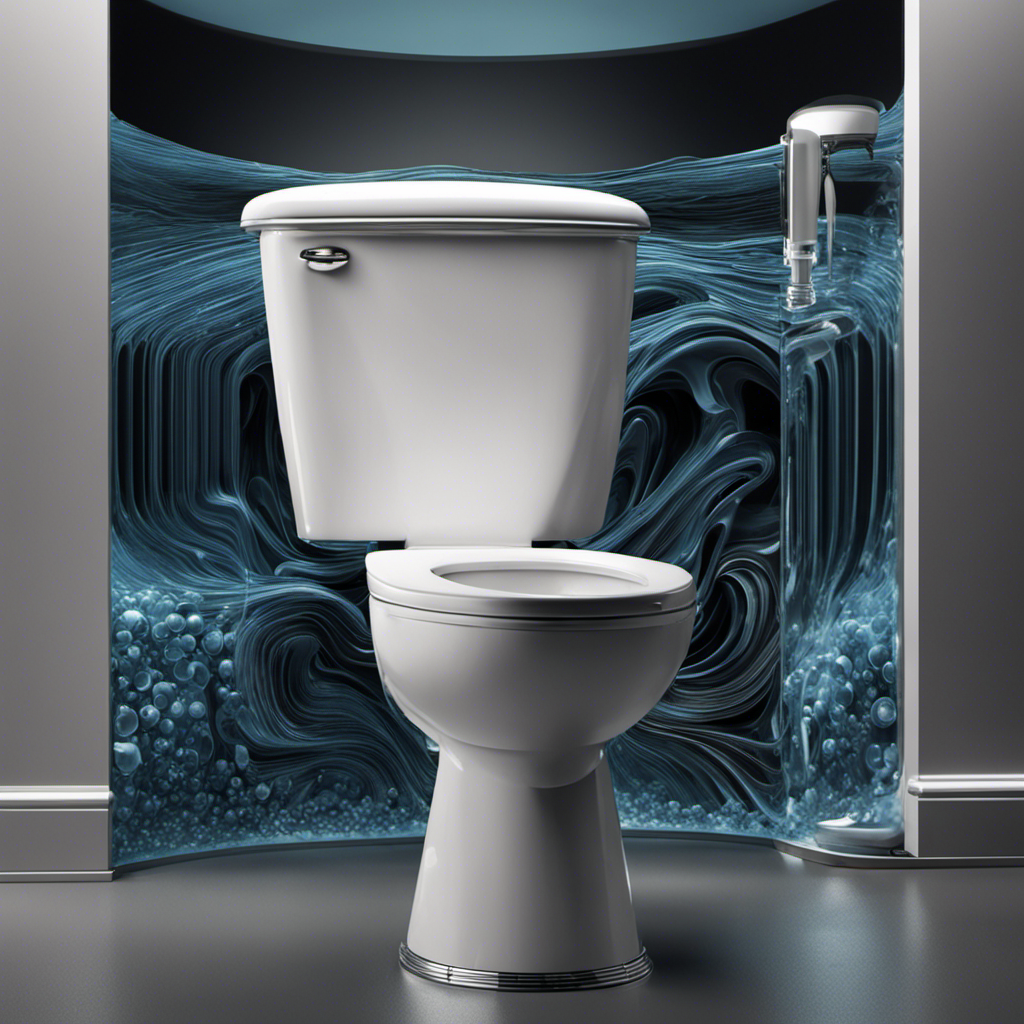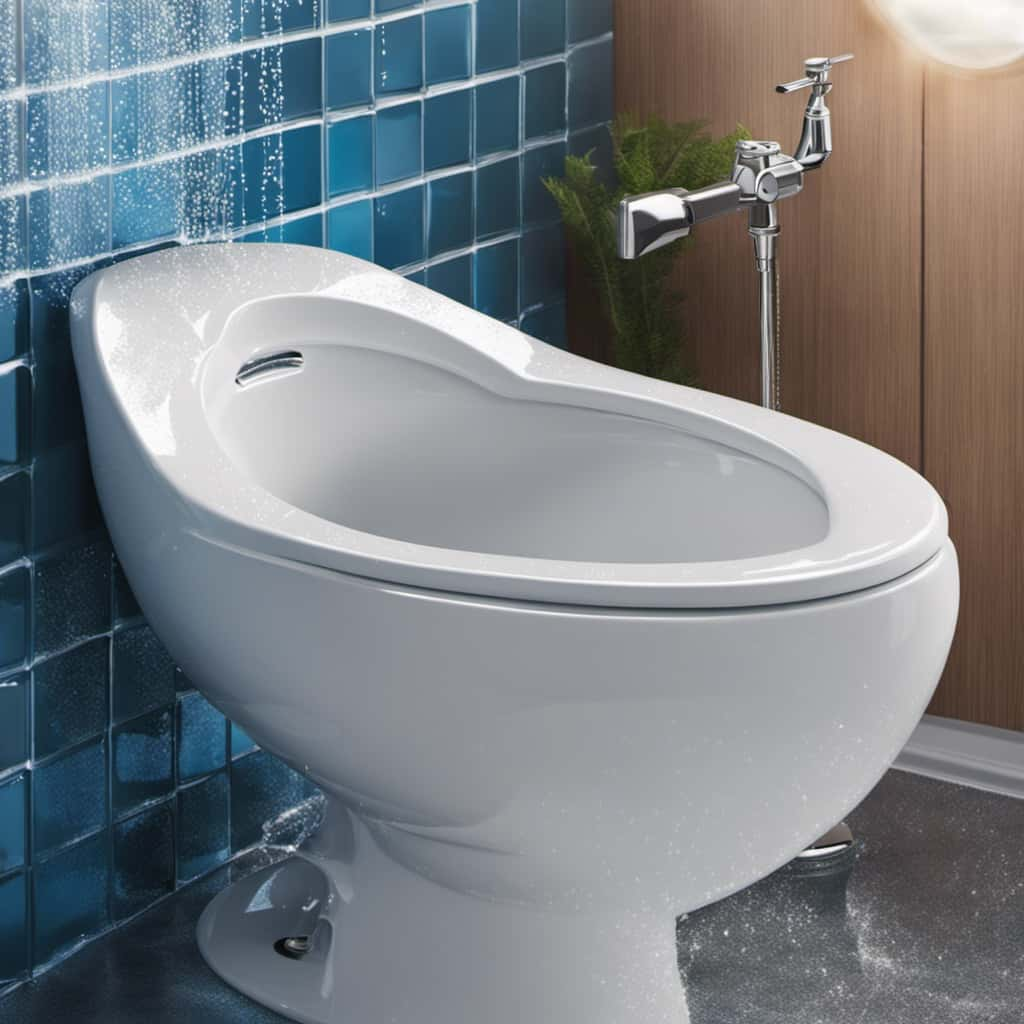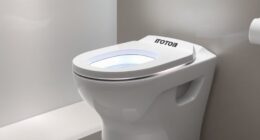- Pros and cons
- Lifespan comparison
When it comes to the eternal debate of gravity-fed versus pressure-assist toilets, we find ourselves at a crossroads, torn between two powerful forces.
Like the clash of titans, these two toilet systems offer unique advantages and drawbacks.
In this article, we dive deep into the waters of water efficiency, flushing power, noise level, maintenance requirements, and cost and installation.
Armed with this knowledge, we will emerge with a clear understanding of which throne reigns supreme.

Key Takeaways
- Pressure assist toilets outperform gravity-fed toilets in water efficiency.
- Pressure assist toilets have a more powerful flush, reducing the likelihood of clogs.
- Gravity-fed toilets are quieter compared to pressure-assist toilets.
- Gravity-fed toilets are generally more cost-effective and easier to install.
Water Efficiency
When it comes to water efficiency, pressure assist toilets outperform gravity fed toilets. These toilets utilize a pressurized air system to propel water with greater force, resulting in a more efficient flush that requires less water. Pressure assist toilets are designed to maximize water conservation while maintaining optimal performance. This not only reduces water consumption but also contributes to a lower environmental impact.
With growing concerns about water scarcity and the need for sustainable practices, pressure assist toilets have become increasingly popular in both residential and commercial settings. Moreover, government regulations have been put in place to encourage the use of water-efficient fixtures, including toilets. These regulations aim to promote water conservation and minimize wastage, aligning with the larger goal of achieving environmental sustainability.
Therefore, when considering water efficiency, pressure assist toilets are the superior choice.
Flushing Power
Continuing from our previous discussion on water efficiency, let’s now delve into the flushing power of gravity-fed and pressure-assist toilets.
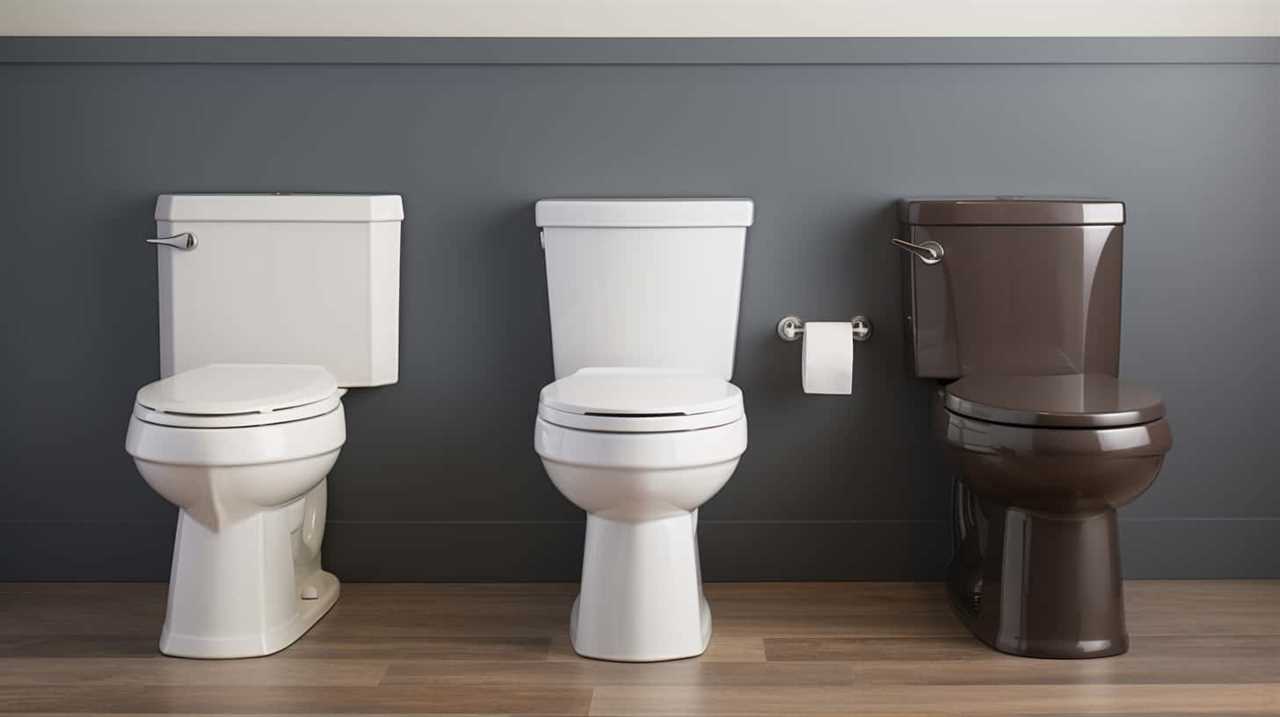
The flushing mechanism plays a crucial role in determining the effectiveness of toilet bowl cleaning. Gravity-fed toilets rely on the force of gravity to create a powerful flush. When the flush valve opens, water flows from the tank into the bowl, creating a siphon effect that removes waste.
Pressure-assist toilets, on the other hand, utilize compressed air to enhance flushing power. As the flush valve opens, the release of compressed air forces water into the bowl with greater velocity, providing a strong, efficient flush.
This increased force improves the toilet bowl cleaning effectiveness, ensuring that waste is effectively cleared away. Overall, while both types of toilets can effectively clean the bowl, pressure-assist toilets offer a more robust flushing power due to their innovative flushing mechanism.
Noise Level
Now let’s move on to the noise level of gravity-fed and pressure-assist toilets, and how it can impact your bathroom experience. When considering the noise level of a toilet, it’s important to take into account the design of the toilet and its environmental impact. Here are four key factors to consider:
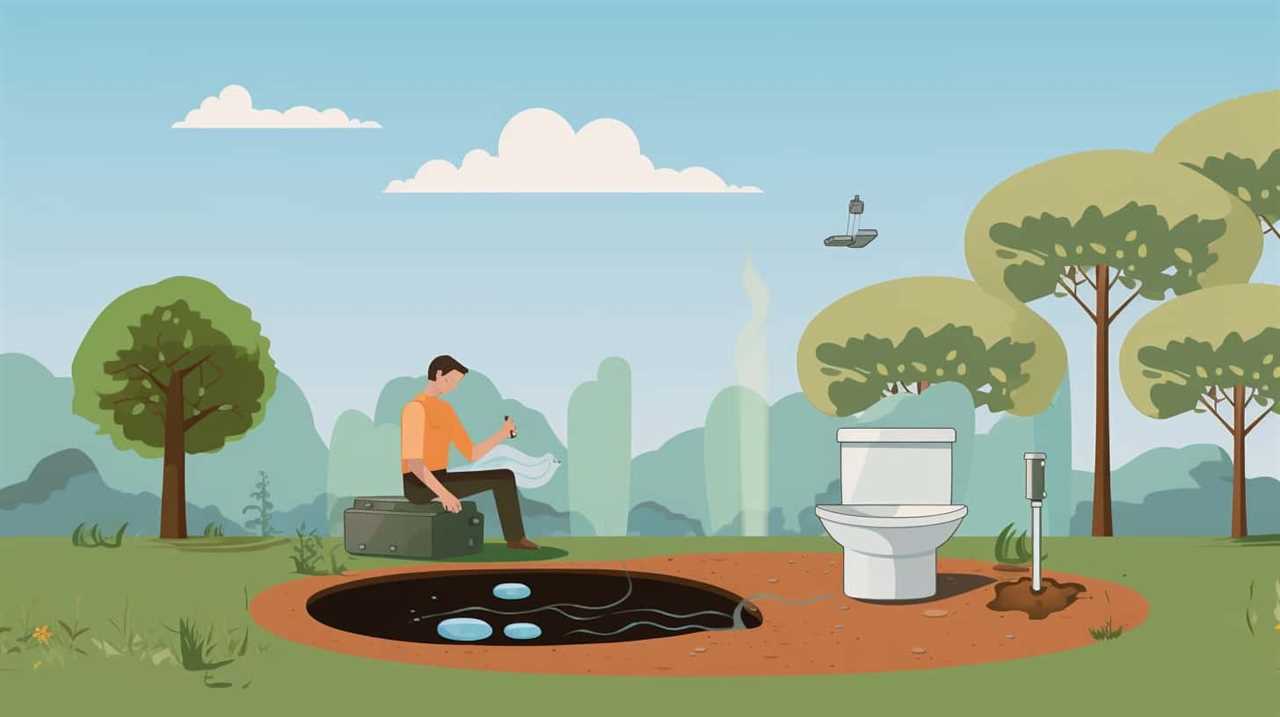
- Gravity-fed toilets: These toilets rely on the force of gravity to flush waste down the drain. They tend to be quieter compared to pressure-assist toilets because they don’t use additional mechanisms to create flushing power.
- Pressure-assist toilets: These toilets use compressed air or water to create a powerful flush. While they offer superior flushing power, they can be noisier due to the additional pressure created during the flushing process.
- Toilet design: The design of the toilet, including the shape and size of the bowl, can also affect the noise level. Some toilets are designed to minimize noise by incorporating features such as extra insulation or noise-canceling materials.
- Environmental impact: In addition to noise level, it’s important to consider the environmental impact of the toilet. Pressure-assist toilets tend to be more water-efficient, but they may also consume more energy due to the use of compressed air or water.
Considering these factors can help you make an informed decision when choosing between gravity-fed and pressure-assist toilets, ensuring a bathroom experience that’s both quiet and environmentally friendly.
Maintenance Requirements
To ensure optimal functionality, it’s essential for homeowners to regularly attend to the maintenance requirements of both gravity-fed and pressure-assist toilets.
When it comes to cleaning techniques, gravity-fed toilets are relatively simple to maintain. Regular cleaning with a non-abrasive cleaner and a soft brush is usually sufficient to keep the toilet bowl and tank clean.
On the other hand, pressure-assist toilets require a bit more attention. Due to their more complex design, it’s important to regularly check for any leaks or malfunctions in the pressure tank and flushing mechanism. Additionally, the pressure tank may need to be periodically cleaned to prevent buildup that can affect its performance.

In terms of long-term durability, gravity-fed toilets are known to be more reliable and have a longer lifespan compared to pressure-assist toilets. However, with proper maintenance and regular inspections, both types of toilets can provide years of trouble-free service.
Cost and Installation
When it comes to cost and installation, homeowners should consider the factors associated with both gravity-fed and pressure-assist toilets. Here are four key points to consider:
- Durability comparison: Gravity-fed toilets are known for their simplicity and sturdy construction, making them highly durable and less prone to mechanical failures. On the other hand, pressure-assist toilets use pressure to flush waste, which may lead to increased wear and tear on internal components.
- Eco-friendliness and sustainability: Gravity-fed toilets are more environmentally friendly since they use less water per flush compared to pressure-assist toilets. Pressure-assist toilets, however, have a more powerful flush, which reduces the likelihood of clogs and requires less water for multiple flushes.
- Cost: Gravity-fed toilets are generally more affordable than pressure-assist toilets, making them a budget-friendly option for homeowners. The cost of the toilet itself, as well as the installation, should be taken into consideration.
- Installation: Gravity-fed toilets are relatively easy to install and require minimal plumbing adjustments. Pressure-assist toilets, on the other hand, may require additional plumbing modifications due to their unique flushing mechanism.
Considering these factors will help homeowners make an informed decision based on their budget, sustainability goals, and installation needs.
Frequently Asked Questions
Are There Any Special Considerations for Installation When Choosing a Gravity-Fed Toilet?
When choosing a gravity-fed toilet, special considerations must be made for installation requirements. We need to ensure proper plumbing connections, sufficient space for the tank and bowl, and proper venting for optimal performance.

Can a Pressure-Assist Toilet Be Retrofitted Into an Existing Plumbing System?
Retrofitting a pressure-assist toilet into an existing plumbing system gives a power boost to your flush. The benefits include improved efficiency and effective waste removal. It’s a smart upgrade for any bathroom.
How Long Do the Flushing Mechanisms Typically Last in Both Types of Toilets?
In comparing the lifespan of flushing mechanisms in gravity-fed and pressure-assist toilets, it’s important to consider the pros and cons of each. We’ll discuss this subtopic in detail, providing technical and analytical insights for those seeking mastery.
Are There Any Specific Cleaning Products or Methods Recommended for Each Type of Toilet?
When it comes to toilet cleaning, we understand the importance of using the right products and methods. That’s why we recommend specific cleaning products and techniques for each type of toilet.
Are There Any Potential Drawbacks or Limitations to Consider When Choosing Either a Gravity-Fed or Pressure-Assist Toilet?
When considering gravity-fed or pressure-assist toilets, it is important to weigh potential drawbacks and limitations. Installation considerations and retrofitting may be necessary. Additionally, one should consider the flushing mechanism lifespan and follow cleaning recommendations for optimal performance.

Conclusion
In conclusion, after carefully analyzing the water efficiency, flushing power, noise level, maintenance requirements, cost, and installation of both gravity-fed and pressure-assist toilets, it’s evident that each option has its own merits and drawbacks.
It’s essential for individuals to consider their specific needs and preferences when choosing between the two. By doing so, they can ensure a satisfactory bathroom experience that aligns with their unique requirements.

